Hartlepool, Durham
Up to 1834
A building on the Headland known as The Friary (or Friarage), originally a Franciscan convent, was used in the early 1800s as town workhouse. In the 1850s, it was also used as a vagrant ward. St Hilda's Hospital was later built on the site which is now a park now as Friarage Gardens.
After 1834
In 1837, Hartlepool became part of the new Stockton-on-Tees Poor Law Union, but in 1859, the northern part separated to form an independent union.
The new Hartlepool Union formally came into existence on 25th March 1859. Its operation was overseen by an elected Board of Guardians, 22 in number, representing its 12 constituent parishes and townships as listed below (figures in brackets indicate numbers of Guardians if more than one):
County Durham:
Brierton, Claxton, Dalton Piercy, Elwick, Elwick Hall, Greatham, Hart, Hartlepool (6), Seaton Carew, Stranton (6), Thorpe Bulmer, Throston.
Later Additions: Middleton, Seaton, Throston Rural, West Hartelepool (all from 1894).
The population falling within the original union at the 1851 census had been 16,068 with parishes and townships ranging in size from Thorpe Bulmer (population 31) to Hartlepool itself (9,503). The average annual poor-rate expenditure for the period 1857-9 had been £834 or 1s.0d. per head of the population.
A new Hartlepool Union workhouse was erected at on Holdforth Road at Throston in 1860-1. It was designed by Matthew Thompson who was also the architect of the workhouses at Chester-le-Street and Houghton-le-Spring. The original building was located at the south-east of the site and had a single storey entrance block with entrance archway. A porter's lodge was at the west of the entrance block, with casual wards to its rear. The main building was a two-storey red-brick building with a central dining-hall at its rear. The original workhouse infirmary stood behind and there was a separate residential schools building at the west of the workhouse.
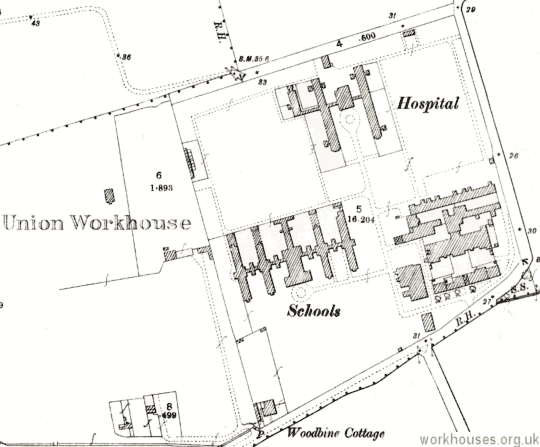
Hartlepool workhouse site, 1896.
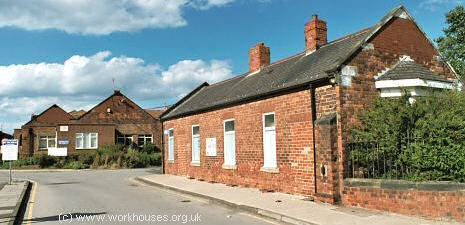
Hartlepool porter's lodge from the south-west, 2001.
© Peter Higginbotham.
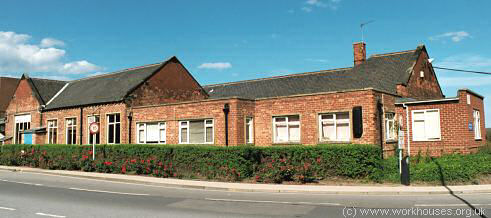
Hartlepool casual wards from the south-west, 2001.
© Peter Higginbotham.
A major expansion took place in 1889 with the erection of a 250-bed pavilion-plan hospital complex to the north of the workhouse, and a school for 500 children to the west. The site layout in 1914 is shown below.
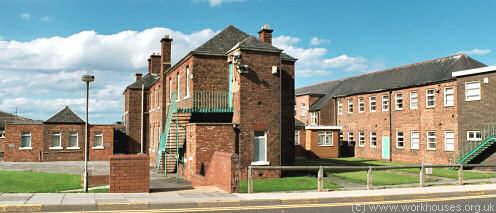
Hartlepool eastern school pavilions from the south, 2001.
© Peter Higginbotham.
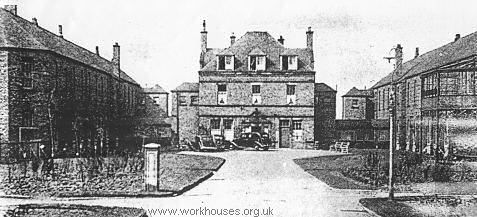
Hartlepool 1889 infirmary from the south, 1930s.
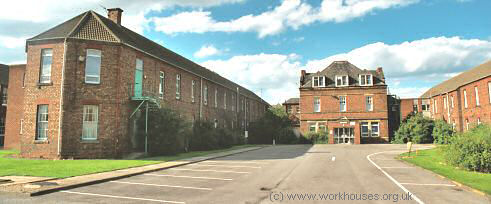
Hartlepool 1889 infirmary from the south, 2001.
© Peter Higginbotham.
In 1914, the chapel in the schools' building was damaged by a shell from a German cruiser. Only five minutes earlier, about 90 elderly inmates had been congregated in the hall at a religious service.
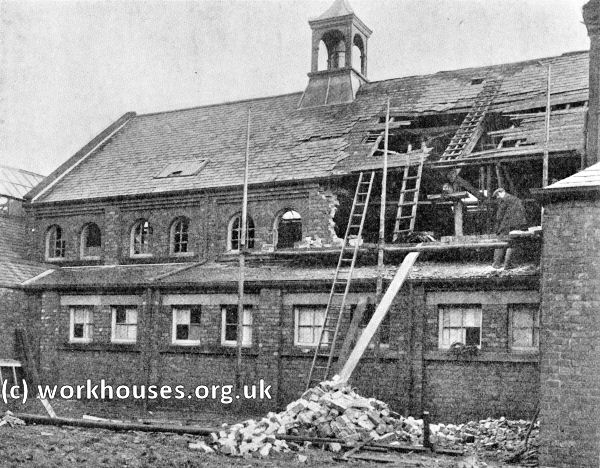
Hartlepool workhouse schools' chapel, 1914.
© Peter Higginbotham.
The workhouse later became Howbeck Infirmary, then Hartlepool General Hospital. The site is now known as the University Hospital of Hartlepool.
Homes
In July 1902, the union opened children's cottage homes at 63 Blakelock Road (now Blakelock Gardens), West Hartlepool, where 30 children could be accommodated out of the 130 then present in the workhouse.
In 1914, the guardians spent £1,300 on the purchase and alteration of 1 and 2 Park Road, West Hartlepool, which had comprised two adjoining chops with dwelling accommodation above. When the changes were complete, the new home had a capacity of around 30 children. Both homes were superintended by Miss A. Potts. By 1920, the schools section of the workhouse site had been taken over for use by adult paupers. The Blakelock Road home later became the council-run Blakelock Children's Home. It was subsequently used as a hostel.
Staff
Inmates
Records
Note: many repositories impose a closure period of up to 100 years for records identifying individuals. Before travelling a long distance, always check that the records you want to consult will be available.
- Teesside Archives, Exchange House, Exchange Square, Middlesbrough TS1 1DB. Very few local records survive. Holdings comprise: Creed Registers (1876-1941).
Bibliography
- Higginbotham, Peter The Workhouse Encyclopedia (2014, The History Press)
Links
- None.
Unless otherwise indicated, this page () is copyright Peter Higginbotham. Contents may not be reproduced without permission.


